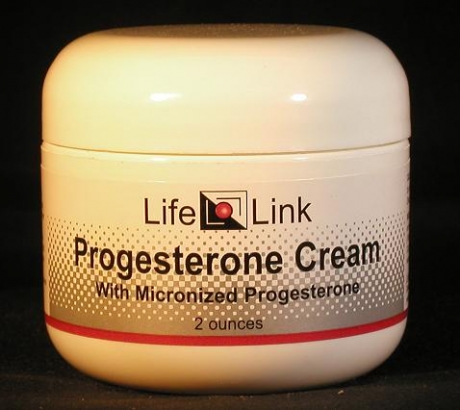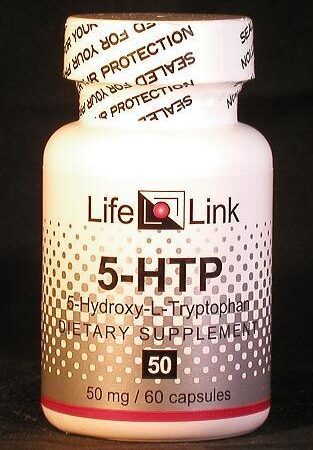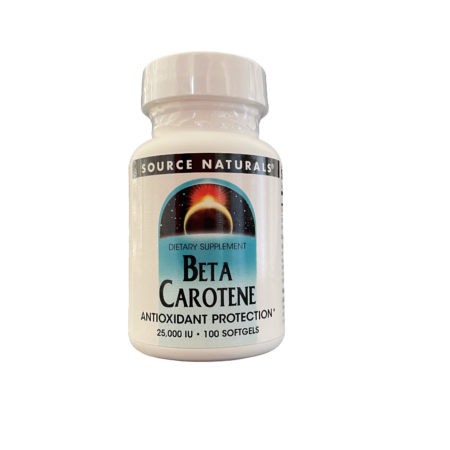Description
Overview
Progesterone Cream — a salve for aging skin, arteries, brain, and sexuality
Progesterone is a hormone that regulates bodily functions in
both men and women. These include cardiovascular processes, cell
division, temperature control, muscle relaxation, inflammation,
and fat metabolism, among others. Progesterone therefore has
many areas of application, such as:
- skin anti-aging
- cardiovascular problems, atherosclerosis, and stroke
- sleep problems, depression and mood
- traumatic brain injury
- menstrual and menopausal symptoms
- endometrial hyperplasia
- breast cancer and breast pain
- anovulation and vaginal dryness.
Read Progesterone Cream Monograph
Progesterone is one of the many steroid hormones made in the bodies of all animals, both male and female. “Steroid” means that its molecular structure contains a “core” pattern of 17 carbon atoms arranged in four fused rings. (See the illustrations in Wikipedia.1) Different steroid hormones are distinguished from one another by the various molecular groups which adorn the steroid core.
Progesterone performs a number of functions in the body, some of them involving cardiovascular processes, cell division, temperature control, muscle relaxation, inflammation, and fat metabolism, and others involving the female monthly cycle and pregnancy. It is therefore not surprising that progesterone supplements can be used, regardless of gender, to achieve a wide variety of effects in the body.
Progesterone is one of a number of “progestins” — hormones with the properties listed above — but progesterone is safer and has fewer side effects than other progestins.2
What we can’t tell you
In the U.S. and some other industrialized countries, government agencies like the U.S. Food and Drug Administration have adopted censorship as a method for intensifying their control over supplement users and their suppliers. Thus, FDA regulations prohibit us from telling you that any of our products are effective as medical treatments, even if they are, in fact, effective.
Accordingly, we will limit our discussion of Progesterone Cream to a brief summary of relevant research, and let you draw your own conclusions about what medical conditions it may be effective in treating.
Medical research has found evidence for progesterone’s effectiveness in the following applications:
- skin anti-aging3
- inhibiting components of atherosclerosis4
- sleep problems5
- depression and mood6
- stroke7,8
- traumatic brain injury7
- preventing fluid retention as a PMS symptom9
- treating vasomotor symptoms after menopause10
- preventing endometrial hyperplasia (thickening of the uterus)11
- lowering risk of breast cancer12
- alleviating cyclical breast pain13
- anovulation14,15
- vaginal dryness16,17,12
- menstrual migraine5
Although progesterone can be administered in various forms, LifeLink has chosen a 2.1% progesterone cream for its product line because of the ease and flexibility of application. Progesterone is absorbed well transdermally18 — in fact, transdermal creams have been shown to be just as effective as oral formulations.19
Stroke and brain injuries
Progesterone is converted into a variety of metabolites with different modes of action in the repair of nervous tissue. Progesterone therefore has a unique potential as a treatment for injuries to the central nervous system, including stroke and traumatic brain injuries.8 Researchers at the Emory University School of Medicine, USA, have suggested that a combination of progesterone and vitamin D3 — another neuroprotective supplement — should provide even better recovery for brain injuries than either supplement would by itself.7
Skin anti-aging
In women menopause results in a decline of various hormones, including progesterone. Men, on the other hand, have a life-long relative shortage of progesterone. Studies in post-menopausal women has shown that the application of progesterone cream to the skin leads to improved elasticity and firmness.3 The fact that this method has not been studied in men does not mean that it doesn’t work — it just means that the medical world is hidebound and uninterested in male esthetics.
Bone loss and osteoporosis
Whether progesterone cream can prevent post-menopausal bone loss is still an open question — studies have reported that it can20 and others have reported that it can’t.10 This suggests that its benefits are unlikely to be dramatic. But even modest improvements in bone strength are important and worth pursuing. A study comparing progesterone cream and soy milk showed that they had comparable benefits, but that used together they interfered with each other.20 Therefore, it is probably best not to use soy milk if you are using progesterone cream for osteoporosis.
Menstrual and menopausal symptoms
The theory behind the use of progesterone for menopausal symptoms is well explained in an article from the Yale University School of Medicine, which states: “The failure of follicular development that characterizes the menopause leads to a marked reduction in serum levels of estradiol and progesterone. As a result, the majority of women develop symptoms, including hot flushes, sleep disturbance, and vaginal dryness. Long-term consequences of ovarian insufficiency include genital atrophy, osteoporosis, and increased rates of myocardial infarction. Estradiol replacement (ERT) has proved effective in treating and preventing these problems. ERT has, however, led to increased risk of endometrial carcinoma. Consequently, treatment regimens now include progestins (HRT) to protect women who have a uterus. Progestins act by down-regulation of estradiol receptor activity, which is an advantage for preventing endometrial hyperstimulation, but a potential disadvantage when beneficial effects of estradiol are opposed.”12
Vasomotor symptoms consist of hot flashes or night sweats that result from sudden opening of the blood vessels close to the skin. Progesterone cream has been shown effective for preventing these symptoms.10
Breast pain associated with menstrual cycle has been found in some studies to be greatly reduced with progesterone cream.13 But other studies have found the exact opposite.21 The medical literature is full of such contradictions, which result from sloppy research work, differing dosages, or other factors. Fortunately, it’s easy enough to test the idea for oneself — if progesterone cream makes your breast pain go away without causing undesired side effects, then it’s “right for you”.
For some women progesterone administration can worsen mood if taken during the second half of the menstrual cycle, or improve it if taken during first half.6 Some experimentation may be necessary to find an appropriate dosing schedule.
Menstrual migraine headaches can be triggered by premenstrual progesterone decline. Research at the University of Vienna has shown that progesterone administration can alleviate this condition.5
Fluid retention is another symptom seen in Premenstrual Syndrome. In a clinical study conducted at the University of Calgary in 1997 a symptomatic improvement was achieved using progesterone.9
Endometrial hyperplasia
Endometrial hyperplasia is a pre-cancerous condition of the endometrium in which the lining of the uterus becomes too thick, which results in abnormal bleeding. A clinical trial at the University Federico II of Naples, Italy, showed that progesterone treatment produced a complete regression of this condition in 90.5% of the patients who used it, of which 78.3% occurred in the first 3 months and 11.5% after 6 months of treatment.
Conclusion
Is Progesterone Cream useful for the conditions and purposes mentioned above? We aren’t allowed to tell you, so you should take a look at some of the references cited here, and then decide for yourself.
References
2 Progesterone: review of safety for clinical studies. Exp Clin Psychopharmacol. 2007 Oct; 15(5):427-44 Goletiani NV, Keith DR, Gorsky SJ
3 Effects and side-effects of 2% progesterone cream on the skin of peri- and postmenopausal women: results from a double-blind, vehicle-controlled, randomized study. Br J Dermatol. 2005 Sep; 153(3):626-34 Holzer G, Riegler E, Hönigsmann H, Farokhnia S, Schmidt JB, Schmidt B
4 Prevention of coronary hyperreactivity in preatherogenic menopausal rhesus monkeys by transdermal progesterone. Arterioscler Thromb Vasc Biol. 2004 May; 24(5):955-61 Hermsmeyer RK, Mishra RG, Pavcnik D, Uchida B, Axthelm MK, Stanczyk FZ, Burry KA, Illingworth DR, Juan C, Nordt FJ
5 Differential effects of progestins on the brain. Maturitas. 2003 Dec 10; 46 Suppl 1:S71-5 Gruber CJ, Huber JC
6 Sex steroid induced negative mood may be explained by the paradoxical effect mediated by GABA(A) modulators. Psychoneuroendocrinology. 2009 Sep; 34(8):1121-32 Andréen L, Nyberg S, Turkmen S, vanWingen G, Fernández G, Bäckström T
7 Combination treatment with progesterone and vitamin D hormone may be more effective than monotherapy for nervous system injury and disease. Front Neuroendocrinol. 2009 Jul; 30(2):158-72 Cekic M, Sayeed I, Stein DG
8 Progesterone as a neuroprotective factor in traumatic and ischemic brain injury. Prog Brain Res.
2009; 175:219-37 Sayeed I, Stein DG
9 Effect of progesterone therapy on arginine vasopressin and atrial natriuretic factor in premenstrual syndrome. Clin Invest Med. 1997 Aug; 20(4):211-23 Watanabe H, Lau DC, Guyn HL, Wong NL
10 Transdermal progesterone cream for vasomotor symptoms and postmenopausal bone loss. Obstet Gynecol. 1999 Aug; 94(2):225-8 Leonetti HB, Longo S, Anasti JN
11 Endometrial hyperplasia: efficacy of a new treatment with a vaginal cream containing natural micronized progesterone. Maturitas. 1994 Dec; 20(2-3):191-8 Affinito P, DiCarlo C, DiMauro P, Napolitano V, Nappi C
12 Hormone replacement therapy in the menopause. Int J Fertil Womens Med. 1997 Mar-Apr; 42(2):78-84 Sarrel PM
13 Double-blind controlled trial of progesterone vaginal cream treatment for cyclical mastodynia in women with benign breast disease. J Endocrinol Invest. 1992 Dec; 15(11):801-6 Nappi C, Affinito P, DiCarlo C, Esposito G, Montemagno U
14 The value of luteal support with progesterone in gonadotropin-induced cycles. Fertil Steril. 1993 Nov; 60(5):786-90 Hamilton CJ, Jaroudi KA, Sieck UV
15 Progesterone alone versus progesterone combined with HCG as luteal support in GnRHa/HMG induced IVF cycles: a randomized clinical trial. Hum Reprod. 1996 Aug; 11(8):1602-5 Mochtar MH, Hogerzeil HV, Mol BW
16 Menopause. Lancet. 2008 Mar 1; 371(9614):760-70 Nelson HD
17 [Sexual dysfunction in the menopause. Incidence, pharmacological treatment and side effects] Ugeskr Laeger. 2006 Feb 6; 168(6):559-63 Gregersen N, Hilmand CB, Jensen PT, Giraldi AG
18 Salivary, but not serum or urinary levels of progesterone are elevated after topical application of progesterone cream to pre- and postmenopausal women. Clin Endocrinol (Oxf). 2000 Nov; 53(5):615-20 O’Leary P, Feddema P, Chan K, Taranto M, Smith M, Evans S
19 Over-the-counter progesterone cream produces significant drug exposure compared to a Food and Drug Administration-approved oral progesterone product. J Clin Pharmacol. 2005 Jun; 45(6):614-9 Hermann AC, Nafziger AN, Victory J, Kulawy R, Rocci ML, Bertino JS
20 Soymilk or progesterone for prevention of bone loss—a 2 year randomized, placebo-controlled trial. Eur J Nutr. 2004 Aug; 43(4):246-57 Lydeking-Olsen E, Beck-Jensen JE, Setchell KD, Holm-Jensen T
21 Progesterone cream for cyclic breast pain. BMJ. 1989 Apr 8; 298(6678):931 McFadyen IJ, Raab GM, Macintyre CC, Forrest AP



Reviews
There are no reviews yet.